As OpenAI was ironing out a new deal with Microsoft in 2016 — one that would nab the young startup critical compute to build what would become ChatGPT — Sam Altman needed the blessing of his biggest investor, Elon Musk.
Technology
T-Mobile hacked by Chinese cyber espionage in major attack on US telecoms
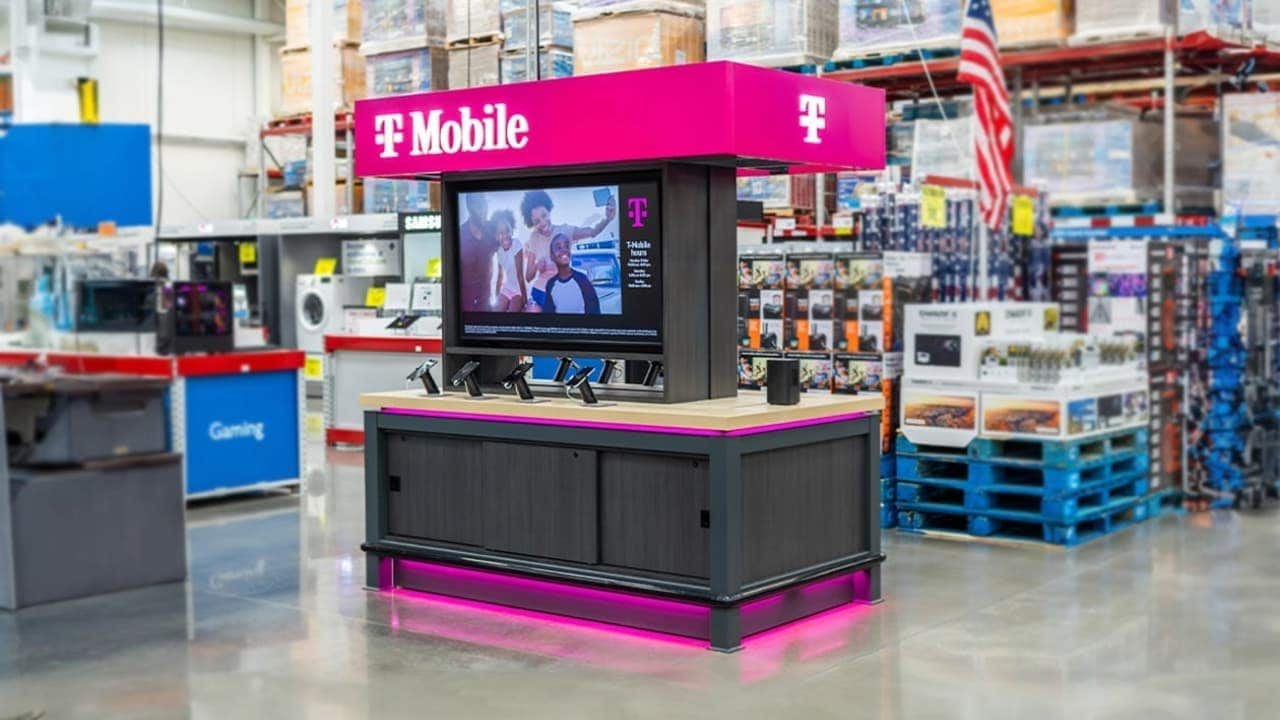
The telecom industry is one of cybercriminals’ favorite targets, likely because of the sensitive data it stores. Your carrier knows what you search for on the web, which websites you visit, who you call and what you text. This type of information is valuable not only to hackers but also to governments. That’s probably why U.S. phone giant T-Mobile was hacked as part of a broad cyberattack on domestic and international phone and internet companies in recent months.
I’M GIVING AWAY A $500 GIFT CARD FOR THE HOLIDAYS
Enter by signing up for my free newsletter!
T-Mobile booth (T-Mobile) (Kurt “CyberGuy” Knutsson)
What you need to know
T-Mobile’s network was compromised in a major Chinese cyber-espionage operation targeting multiple U.S. and international telecommunications companies, according to a report that cited sources familiar with the matter.
The report revealed that hackers connected to a Chinese intelligence agency breached T-Mobile as part of a monthslong effort to spy on the cellphone communications of high-value intelligence targets. However, the report did not specify when the attack occurred, and it remains unclear whether any information about T-Mobile customers’ calls or communication records was stolen.
The U.S. government also confirmed this month that Chinese hackers breached multiple U.S. telecommunications service providers to access wiretap systems used by law enforcement for surveillance of Americans. Wiretap systems allow law enforcement agencies to monitor phone calls, text messages and internet communications as part of investigations, typically with a warrant.
CISA (Cybersecurity and Infrastructure Security Agency) and the FBI issued a joint statement revealing “a broad and significant” cyber espionage campaign. The statement disclosed that PRC-affiliated hackers had breached networks at “multiple telecommunications companies” across the United States. While CISA and the FBI did not name the organizations affected, multiple reports suggest that T-Mobile, AT&T, Lumen (formerly CenturyLink) and Verizon are likely on the list.
WSJ reported in October that Chinese hackers had access to the networks “for months or longer,” enabling them to collect “internet traffic from internet service providers that count businesses large and small and millions of Americans as their customers.”
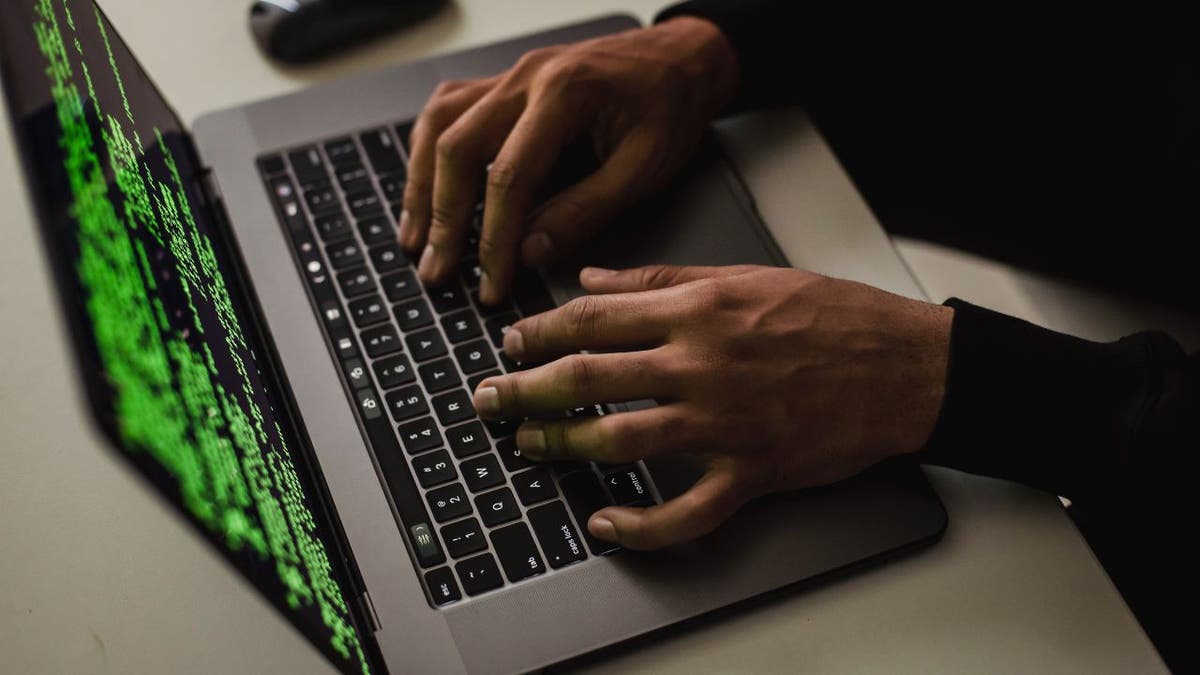
Illustration of a hacker at work (Kurt “CyberGuy” Knutsson)
HERE’S WHAT RUTHLESS HACKERS STOLE FROM 110 MILLION AT&T CUSTOMERS
T-Mobile’s many data breaches
T-Mobile has faced several hacks in recent years. In 2021, a malicious actor breached T-Mobile’s lab environment by posing as a legitimate connection to an unidentified piece of equipment. The hacker guessed passwords for multiple servers and moved laterally through the network, ultimately stealing personal data, including names, addresses, Social Security numbers and driver’s license IDs, from tens of millions of customers.
In 2022, T-Mobile experienced another breach when a malicious actor used SIM-swapping, phishing and other tactics to infiltrate the company’s internal platform for managing mobile resellers who serve T-Mobile customers.
The troubles continued into 2023. Early in the year, hackers used phished credentials from dozens of T-Mobile retail employees to access a sales application originally set up during the COVID-19 pandemic for remote viewing of customer data. Then, in January 2023, a misconfigured application programming interface exposed personal data for 37 million current customers, marking yet another significant security lapse.
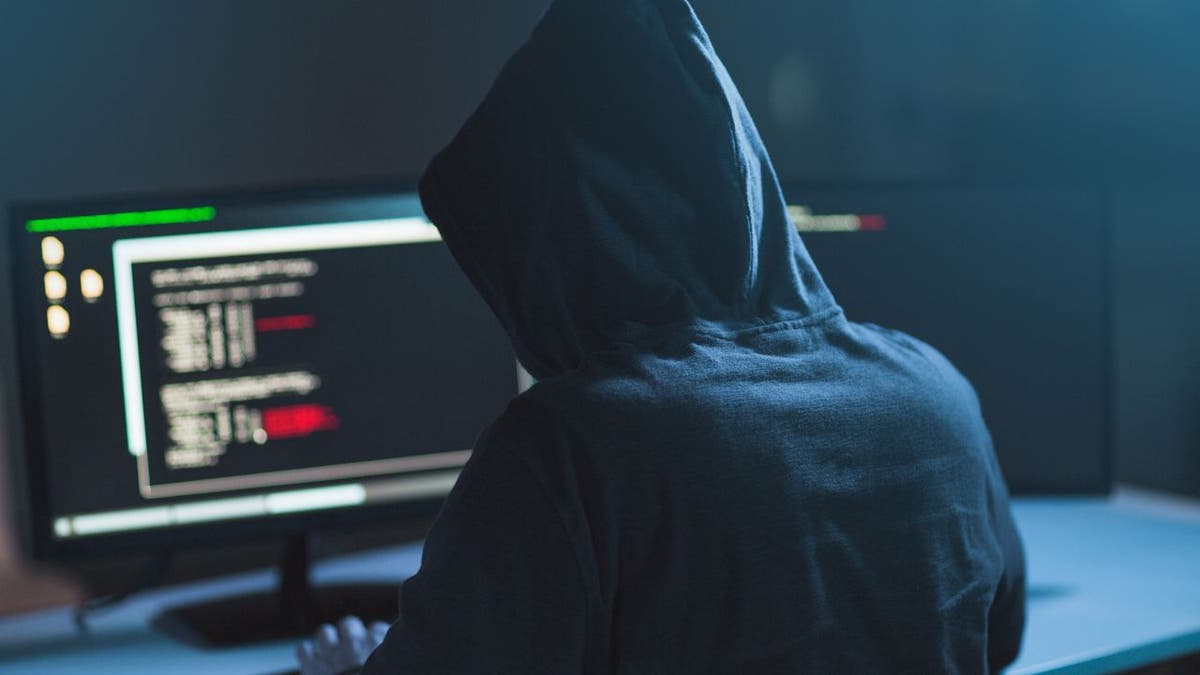
Illustration of a hacker at work (Kurt “CyberGuy” Knutsson)
BEWARE OF ENCRYPTED PDFs AS THE LATEST TRICK TO DELIVER MALWARE TO YOU
T-Mobile’s response
When CyberGuy reached out to T-Mobile regarding the latest security incident, a spokesperson provided the following statement: “T-Mobile is closely monitoring this industry-wide attack. Due to our security controls, network structure and diligent monitoring and response we have seen no significant impacts to T-Mobile systems or data. We have no evidence of access or exfiltration of any customer or other sensitive information as other companies may have experienced. We will continue to monitor this closely, working with industry peers and the relevant authorities.”
WHAT TO DO IF YOUR BANK ACCOUNT IS HACKED
5 ways to stay safe amid the rise in telecom data breaches
1) Change your passwords regularly: Make it a habit to update your passwords every few months, especially for your telecom accounts and related services. Use strong, unique passwords that include a mix of letters, numbers and symbols. Password managers can help you generate and store these securely.
2) Invest in personal data removal services: Consider services that scrub your personal information from public databases. This reduces the chances of your data being exploited in phishing or other cyberattacks after a breach. Check out my top picks for data removal services here.
3) Use identity theft protection: Identity theft protection services monitor your accounts for unusual activity, alert you to potential threats and can even assist in resolving issues if your data is compromised. See my tips and best picks on how to protect yourself from identity theft.
4) Enable two-factor authentication (2FA): Add an extra layer of security to your telecom accounts with 2FA. This requires a second form of verification, like a text code or an app-based prompt, making it harder for hackers to access your accounts even if they have your password.
5) Guard against phishing scams with strong antivirus software: Be cautious about unsolicited calls, texts or emails that ask for personal information or account access. Legitimate companies won’t ask for sensitive details this way. If something seems off, contact your telecom provider directly through official channels. Whatever you do, don’t click on links, as they can lead to scams or malware. The best way to safeguard yourself from malicious links that install malware, potentially accessing your private information, is to have strong antivirus software installed on all your devices. This protection can also alert you to phishing emails and ransomware scams, keeping your personal information and digital assets safe. Get my picks for the best 2024 antivirus protection winners for your Windows, Mac, Android and iOS devices.
Telecom providers like T-Mobile and AT&T are frequent targets for hackers. Over the last two years, millions of Americans have had their data stolen, things like call records, text messages and even personal details. The issue got so bad that the FCC stepped in, warning T-Mobile to step up its cybersecurity efforts. The company was fined about $30 million, split between a $15 million penalty and a mandatory $15 million investment in better security. Unfortunately, if the companies handling your data keep getting breached, there’s only so much you can do.
Do fines and penalties for telecom companies feel like enough of a deterrent, or should they face stricter consequences? Let us know by writing us at Cyberguy.com/Contact.
For more of my tech tips and security alerts, subscribe to my free CyberGuy Report Newsletter by heading to Cyberguy.com/Newsletter. Ask Kurt a question or let us know what stories you’d like us to cover.
Follow Kurt on his social channels:
Answers to the most asked CyberGuy questions:
New from Kurt:
Copyright 2024 CyberGuy.com. All rights reserved.
Kurt’s key takeaway

Technology
Inside Elon Musk’s messy breakup with OpenAI
/cdn.vox-cdn.com/uploads/chorus_asset/file/25739950/247386_Elon_Musk_Open_AI_CVirginia.jpg)
“$60MM of compute for $10MM, and input from us on what they deploy in the cloud,” Altman messaged Musk in September 2016, according to newly revealed emails. Microsoft wanted OpenAI to provide feedback on and promote (in tech circles, “evangelize”) Microsoft AI tools like Azure Batch. Musk hated the idea, saying it made him “feel nauseous.”
Altman came back with another offer: “Microsoft is now willing to do the agreement for a full $50m with ‘good faith effort at OpenAI’s sole discretion’ and full mutual termination rights at any time. No evangelizing. No strings attached. No looking like lame Microsoft marketing pawns. Ok to move ahead?”
“Fine by me if they don’t use this in active messaging,” Musk responded. “Would be worth way more than $50M not to seem like Microsoft’s marketing bitch.”
Musk released these emails and others last week as part of a lawsuit he’s filed against OpenAI and Microsoft. They are ostensibly meant to demonstrate an anticompetitive partnership between the two companies. But primarily, they expose the details of early collaborations and power struggles between Altman and Musk, who invested between $50 million and $100 million in the earliest iteration of OpenAI. They trace OpenAI’s evolution from an open-source nonprofit to what the lawsuit calls a “closed-source de facto subsidiary” of Microsoft that abandoned its mission to develop AI for good. And they lay bare the complete and utter unraveling of Musk and Altman’s once-promising partnership.
“Elon’s third attempt in less than a year to reframe his claims is even more baseless and overreaching than the previous ones,” OpenAI spokesperson Hannah Wong wrote in a statement to The Verge. “His prior emails continue to speak for themselves.”
“Would be worth way more than $50M not to seem like Microsoft’s marketing bitch,” Musk said
Musk and Altman launched OpenAI united by fears of human-level intelligence in the hands of tech giants like Google — only to see it become the kind of tech juggernaut they feared. After winning a CEO position that Musk coveted, Altman chose to keep OpenAI’s cutting-edge AI behind closed doors, claiming it was too dangerous to be openly released. The decision incensed Musk, who left OpenAI’s board to found his own competitor, xAI. Nearly a decade after the pair founded OpenAI, the two companies are amassing billions of dollars and Musk is taking the fight to court — in a race to own what both men see as the inevitable future of computing.
“Been thinking a lot about whether it’s possible to stop humanity from developing AI,” Altman wrote in 2015 in an email to Musk as a pitch to start OpenAI. “If it’s going to happen anyway, it seems like it would be good for someone other than Google to do it first.”
The talent problem
From its inception, OpenAI was caught between two conflicting forces: an idealistic mission to benefit humanity and a cutthroat race against tech behemoths. Musk and Altman agreed that whatever their motivations, securing top talent (along with piles of cash) would be a paramount concern. This early compromise would set the stage for what Musk would later call the startup’s pursuit of profit over principle.
In 2015, the startup was known as YC AI — a lab tucked inside Y Combinator’s nonprofit research division, YCR. Altman, then president of the startup incubator, leveraged its extensive network and resources to attract researchers and money. Musk urged Altman and CTO (now president) Greg Brockman to seek over $100 million in funding, cautioning them that anything less would appear paltry compared to the deep pockets of tech giants like Google and Facebook.
“I think we should say that we are starting with a $1B funding commitment. This is real. I will cover whatever anyone else doesn’t provide,” Musk said in 2015 emails revealed by OpenAI earlier this year in response to Musk’s lawsuit.
Still, despite Musk’s support and a war chest of millions of dollars, the fledgling organization faced an early challenge that plagues most startups: the fierce competition for top talent. OpenAI might be the hottest place to work in Silicon Valley today, but a decade ago (and long before the launch of ChatGPT), many top AI researchers were unlikely to give it a second glance.
In their aggressive bid for the best AI researchers, Altman and his team devised an unusual compensation package: a base salary of $175,000, a “part-time partner” title at YC, and 0.25 percent equity in each YC startup batch. (Now, it’s more common for AI researchers to be compensated closer to $1 million annually.) Altman billed it as a “Manhattan Project for AI,” per one email to Musk, and sensed he could get many of the top 50 researchers to join and “structure it so that the tech belongs to the world via some sort of nonprofit but the people working on it get startup-like compensation.”
The goal was to assemble an elite founding team of seven to 10 members — whatever it took to win the industry’s best minds. Still, Google’s AI lab, DeepMind, was on their heels.
“DeepMind is going to give everyone in OpenAI massive counteroffers tomorrow to try to kill it,” Altman wrote to Musk in December 2015. “Do you have any objection to me proactively increasing everyone’s comp by 100-200k per year? I think they’re all motivated by the mission here but it would be a good signal to everyone we are going to take care of them over time.”
“Sounds like DeepMind is planning to go to war over this,” Altman added.
Musk approved of the salary bumps, and by February 2016, OpenAI’s founding team was offered a $275,000 salary plus YC equity, while subsequent hires received a $175,000 salary with performance-based bonuses of $125,000 or equivalent stock in YC or SpaceX. Brockman added that there were three special cases: himself, along with cofounders Ilya Sutskever and Trevor Blackwell. It was later reported that Sutskever earned more than $1.9 million in 2016, and he told The New York Times that he “turned down offers for multiple times the dollar amount” he accepted from OpenAI. “I don’t know what will happen if/when Google starts throwing around the numbers they threw at Ilya,” Brockman wrote to Musk as he outlined a plan to poach researchers.
“We need to do what it takes to get the top talent. Let’s go higher. If, at some point, we need to revisit what existing people are getting paid, that’s fine,” Musk replied. “Either we get the best people in the world or we will get whipped by DeepMind. Whatever it takes to bring on ace talent is fine by me.” He warned that a victory by DeepMind, which was causing him “extreme mental stress,” would be really bad news with their “one mind to rule the world” philosophy. “They are obviously making major progress and well they should, given the talent level over there,” Musk added.
AGI dictatorship
It didn’t take long for things to get contentious between the cofounders.
In August 2017, OpenAI was ironing out the specifics of an initial funding round of between $200 million and $1 billion. Shivon Zilis, an ex-OpenAI board member and Neuralink operations director who would later bear three of Musk’s 12 children, wrote to Musk that Brockman and Sutskever were concerned. They were worried about how a newly founded for-profit branch of OpenAI would distribute equity and control as well as whether Musk — who wanted the job of CEO there — would commit sufficient time to it. “This is very annoying,” Musk responded, according to one of the newly released emails. “Please encourage them to go start a company. I’ve had enough.”
The next month, Sutskever and Brockman escalated with a joint email to Musk and Altman. They expressed fears that Musk would seize “unilateral absolute control” over artificial general intelligence (AGI) if he took power as CEO. At the same time, they questioned Altman’s motivations, asking why “the CEO title is so important” to him. “Is AGI truly your primary motivation? How does it connect to your political goals? How has your thought process changed over time?” the pair asked. (The email doesn’t elaborate on what “politics” refers to, but Altman had become vocally active in California political campaigning earlier that year.) They said that they had let the promise of money cloud their judgment during earlier negotiations, blinding them to concerns they should have raised.
“The goal of OpenAI is to make the future good and to avoid an AGI dictatorship. You are concerned that [DeepMind CEO Demis Hassabis] could create an AGI dictatorship. So do we,” the pair wrote. “So it is a bad idea to create a structure where you could become a dictator if you chose to, especially given that we can create some other structure that avoids this possibility.”
The email echoed a common refrain from OpenAI’s founders: that superintelligent AI was a serious threat to humanity, and any single entity controlling that power was even greater. But Musk was unimpressed.
“It is a bad idea to create a structure where you could become a dictator if you chose to,” Sutskever told Musk
“I will no longer fund OpenAI until you have made a firm commitment to stay or I’m just being a fool who is essentially providing free funding for you to create a startup. Discussions are over,” Musk replied. Altman replied that he remains “enthusiastic about the non-profit structure,” which ultimately led Sutskever and Brockman to back down.
Shortly after the confrontation, Zilis relayed a conversation she had with Altman to Musk. Zilis revealed that Altman “admitted that he lost a lot of trust with Greg and Ilya through this process” and “felt their messaging was inconsistent and felt childish at times.” Altman decided to take 10 days off to process the incident, Zilis added, because he “needs to figure out how much he can trust them and how much he wants to work with them.”
Just five months after Brockman and Sutskever’s email expressing fears of a power struggle, the situation reached another inflection point. In an altercation that was reported years later, Musk became convinced OpenAI had fallen irreparably behind Google and proposed taking control of the company himself — the very scenario Brockman and Sutskever had cautioned against.
“My probability assessment of OpenAI being relevant to DeepMind/Google without a dramatic change in execution and resources is 0%. Not 1%. I wish it were otherwise,” Musk said in 2018, per emails revealed by OpenAI earlier this year.
OpenAI’s leadership rejected his offer, and Musk departed the board in February 2018, cutting off funding but continuing to offer his support as an adviser.
Photo by Allison Robbert-Pool / Getty Images
The loss of Musk, who had by that point reportedly invested $100 million, put OpenAI’s nonprofit model in peril. When Musk was still largely bankrolling the operation in 2017, Zilis explained to him that OpenAI leadership wanted to raise “$100M out of the gate” because “they are of the opinion that the datacenter they need alone would cost that.” So, in 2019, desperate to fund the training data center and reduce reliance on Musk, the team crafted a unique structure: a capped for-profit company controlled by the nonprofit. LinkedIn cofounder Reid Hoffman and venture capitalist Vinod Khosla participated in the first funding round, which secured pledges of nearly $1 billion but a far smaller initial funding of $130 million.
In March 2019, Musk sent Altman an article that implied his involvement in the new for-profit structure. “Please be explicit that I have no financial interest in the for-profit arm of OpenAI,” Musk said in the email, which he would later submit for inclusion in the suit. Altman responded simply: “On it.”
Etched in OpenAI’s history
OpenAI wields immense influence and power in the AI industry, and the battle for control was not lost on either Musk or Altman. In the end, Altman emerged victorious — then consolidated his power into near-total control over OpenAI.
The legal merits of Musk’s case are questionable. While he’s accused OpenAI and Microsoft of myriad offenses, much of his suit boils down to accusing Altman of hypocrisy, not typically something that’s punished in a court of law. The case is being heard in California, not in Texas, where Musk has been able to count on a sympathetic ear from a Tesla-stock-owning judge. Still, a lawsuit that accuses OpenAI and Microsoft of anticompetitive practices could garner sympathy while Musk has the ear of US president-elect Donald Trump.
But whatever its outcome, the suit gives Musk a chance to reveal details that shape the narrative of OpenAI’s origins and his own role. The exhibits show Altman securing power in the company’s early days, perhaps despite the wishes of his cofounders. They underline Altman’s willingness to go toe-to-toe with his for-profit competitors from the beginning. And they provide the public with a clear picture of what powers OpenAI: Altman’s willingness to do whatever it takes to get what he wants.
How complete is this narrative? We don’t know. It’s likely a lot of important conversations happened offline or in emails that aren’t included. And Musk, obviously, isn’t any less power-hungry; if anything, this suit demonstrates his sheer petty desire to retaliate when slighted. But as both leaders are competing for a finite amount of venture capitalist cash, he may be betting that he can tear down Altman’s reputation — and cement himself as the rightful steward of AGI.
Technology
Netflix adds Beyoncé to live entertainment juggernaut
/cdn.vox-cdn.com/uploads/chorus_asset/file/25739166/AAAAQT3Ud9lF0x4ARNE6dgM2F39BRnrQYAVXYXRmFPQwRqYE3WTXlgu9dQfP_1zYemEDv16jkFkA2cm9leR4Gbdwg9XmjMgmKKG1L7QekXO2UAqMELfi9umOvcxVSKNfgrYoYUc6HJPhyyaVb7F_YBXid9dGrBs.jpg)
Netflix is trying to carve a slice of the live entertainment market, and it’s enlisting help from Beyoncé to do so. The Houston-born singer will perform in her hometown on December 25th, headlining the halftime show for the Texans-Ravens NFL matchup as part of Netflix’s Christmas Gameday live show.
Beyoncé’s performance will take place in the second of two NFL games that Netflix is streaming on Christmas Day, the first being between the Kansas City Chiefs and the Pittsburgh Steelers. The star is set to perform songs from Cowboy Carter live for the first time, and “is expected to bring along some special guests” that featured on the album, according to Netflix’s announcement. The games mark Netflix’s NFL streaming debut, having secured a three-year deal in May that also includes “at least one holiday game each year” in 2025 and 2026.
The streaming giant is investing heavily to expand into live sports and major events — entertainment industries that attract some of the largest audiences and attention from advertisers. Its latest announcement comes two days after Netflix streamed a live boxing match between Mike Tyson and Jake Paul that attracted 65 million viewers. If we’re comparing with 2023 TV viewership, that would place the fight second only to the 115 million people who watched the Super Bowl telecast last year. For some, the Tyson vs Paul match was disrupted by buffering and connectivity issues that raised questions about the streamer’s capability to host live event coverage in the future.
Technology
Helpful hack: Customize your home screen by adding widgets on your iPhone
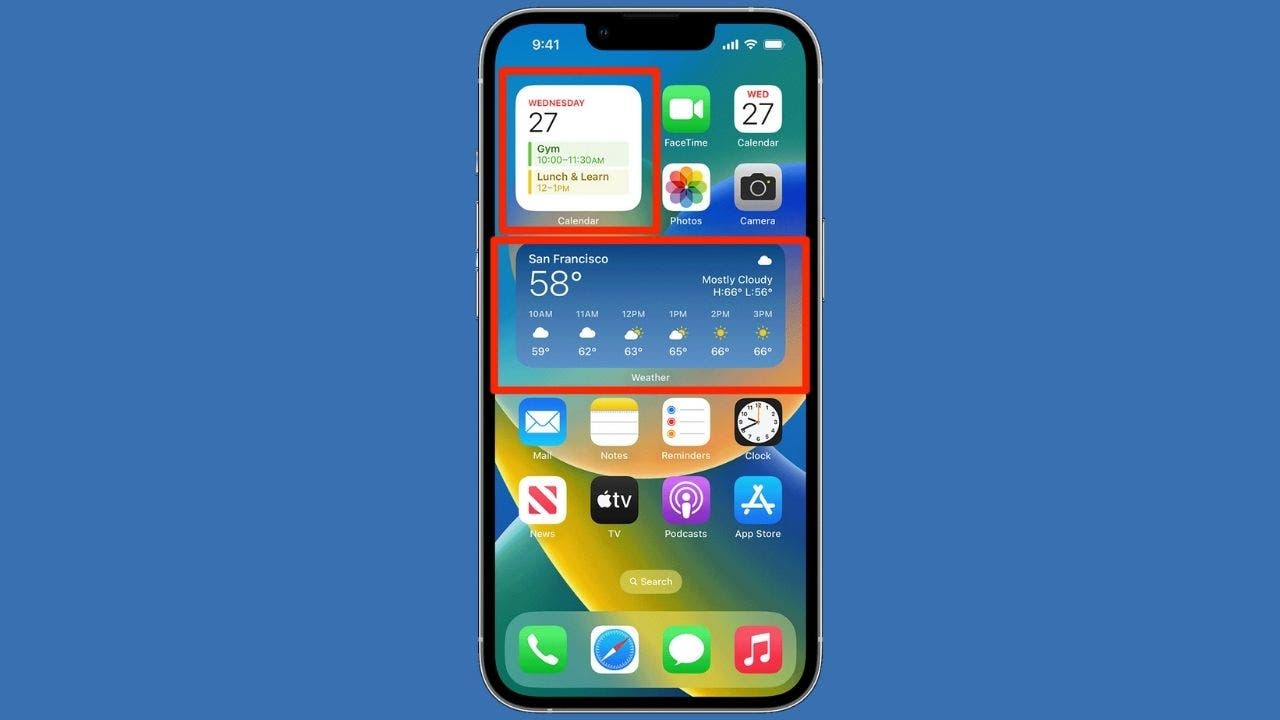
Have you ever wished for a way to access your favorite apps and information without the hassle of digging through your iPhone’s home screen? Well, you’re in luck. Widgets are here to transform your iPhone experience. Think of them as mini apps that bring key information right to your fingertips, allowing you to stay updated at a glance. Whether it’s checking the weather, tracking your fitness goals or keeping an eye on your calendar, widgets make it all possible without needing to open each app individually. Let’s get started on making your home screen not just functional but uniquely yours.
I’M GIVING AWAY A $500 GIFT CARD FOR THE HOLIDAYS
Enter by signing up for my free newsletter.
Image of widgets on iPhone (Apple) (Kurt “CyberGuy” Knutsson)
What are widgets?
Widgets are mini applications that display at-a-glance information from your favorite apps directly on your home screen. They provide quick access to key features and updates without the need to open the full app, saving you time and streamlining your iPhone experience.

Widgets on iPhone (Kurt “CyberGuy” Knutsson)
HOW TO PROTECT YOUR IPHONE & IPAD FROM MALWARE
How to update your iPhone to the latest software
Not sure if you’re running the latest iOS? No worries. Here are some quick steps to update your iPhone:
- Open Settings
- Tap General
- Select Software Update
- If available, tap Update Now and begin downloading and installing iOS 18.1
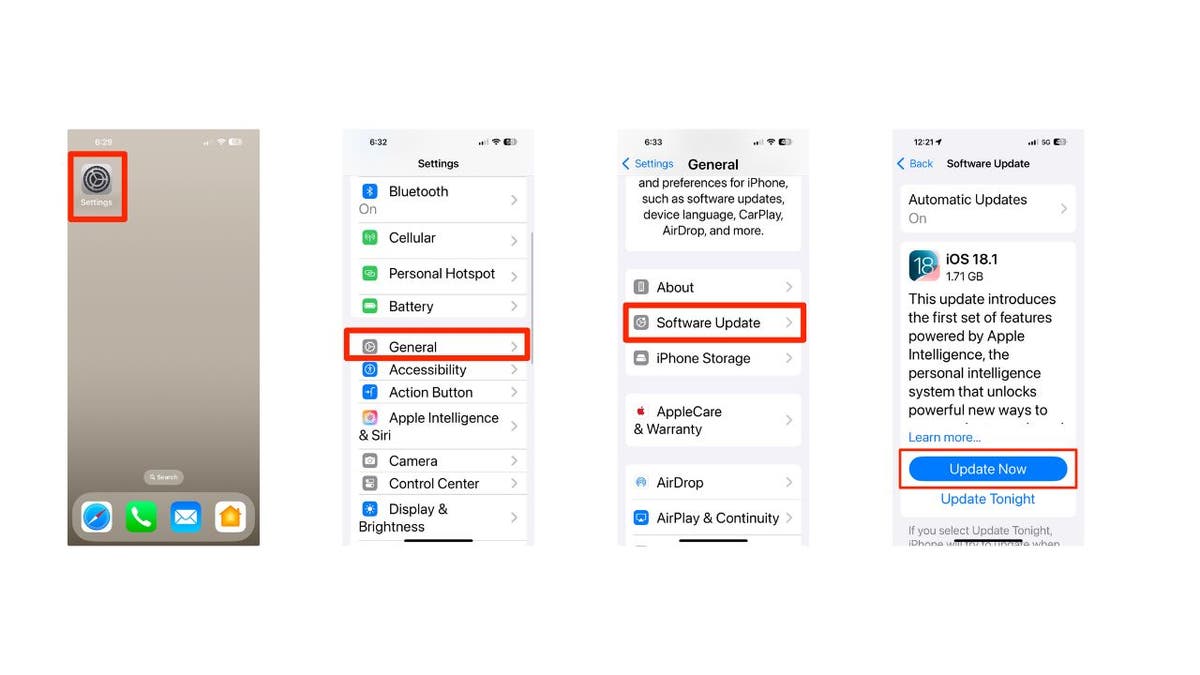
Steps to update your iPhone’s software (Kurt “CyberGuy” Knutsson)
HOW TO SECURELY LOCK YOUR IPHONE AND IPAD FROM PRYING EYES
Adding widgets to your home screen
Follow these simple steps to add widgets to your home screen and make your iPhone even handier:
- Touch and hold an empty area on your home screen until the apps start to jiggle.
- Look for the Edit icon in the top-left corner of your screen and tap it.
- Click Add Widget
- Scroll through the available widgets or use the search bar to find a specific one.
- Tap on your chosen widget, then swipe left or right to view different options.
- Once you’ve selected the size, tap Add Widget to place it on your home screen.

Steps to add widgets to your iPhone’s home screen (Kurt “CyberGuy” Knutsson)
LET YOUR IPHONE READ ALOUD WHAT YOU CAN’T SEE
Arranging and resizing widgets
After adding a widget, you can easily adjust its position and size. Here’s how:
- Touch and hold the widget until it floats, then drag it to your desired location. You can place it anywhere on the current page or even drag it to the edge of the screen to move it to a different page. Then, tap an empty area on the home screen.
- Next, long-press on a widget to see available size options. Tap on the size you’d like the widget to be.
- Now, tap on the empty area on the home screen, and if available, you can grab the corner of the widget where you see a small handle to make it larger.
- To finalize the changes, tap Done.
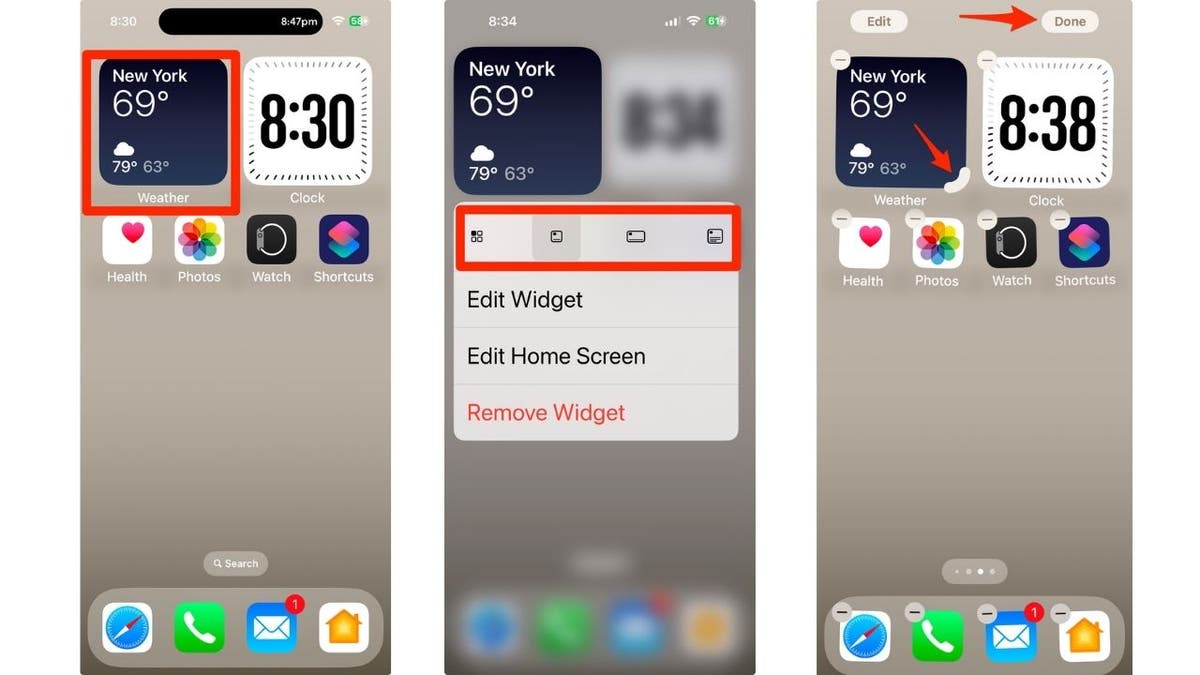
Steps to arrange and resize widgets on iPhone’s home screen (Kurt “CyberGuy” Knutsson)
Customizing widget appearance
iOS 18 introduced new ways to customize the look of your widgets:
Change icon size: Press the empty area on your home screen. Tap Edit at the top of the screen, then choose Customize to access options for making icons larger.
Adjust appearance: Select Light or Dark mode for your icons and widgets or choose Automatic to switch based on the time of day.
Add color tint: Use the Tinted option to add a color overlay to your icons and widgets, adjusting the hue and saturation to your liking. Press the empty area on your home screen to save your changes.
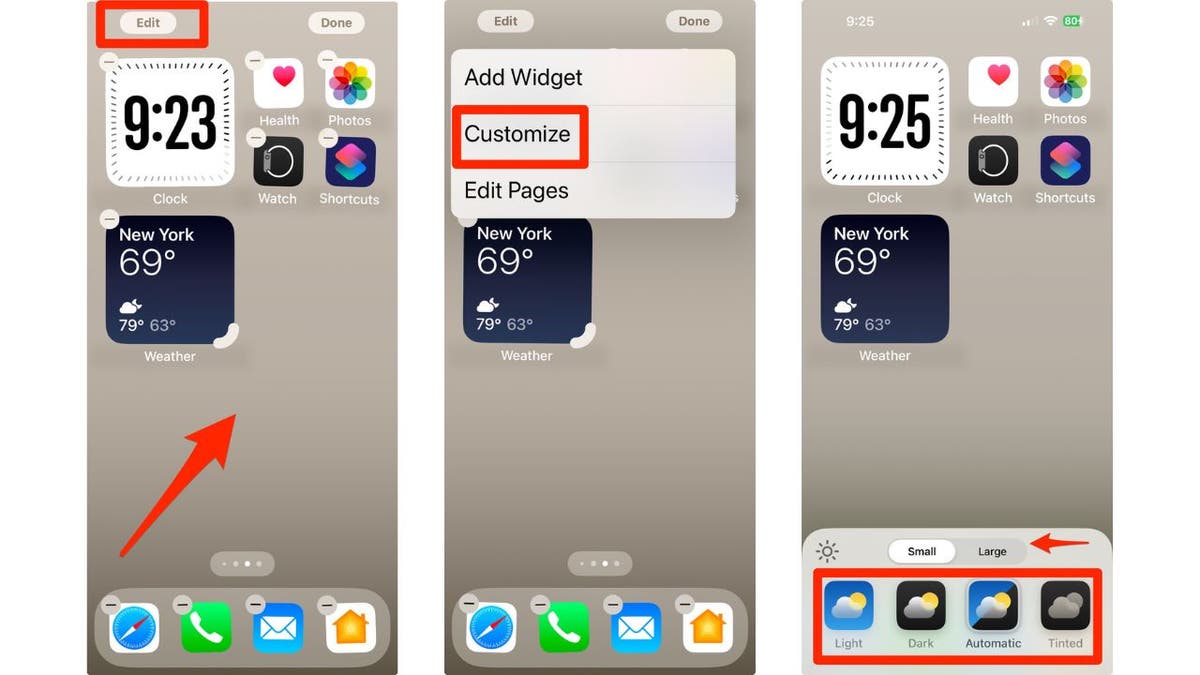
Steps to customize widget appearance (Kurt “CyberGuy” Knutsson)
Removing widgets
If you want to remove a widget from your home screen:
- Touch and hold an empty area on the home screen until the apps jiggle.
- Look for the “-” icon on the widget you want to remove.
- Tap Remove to confirm your decision.
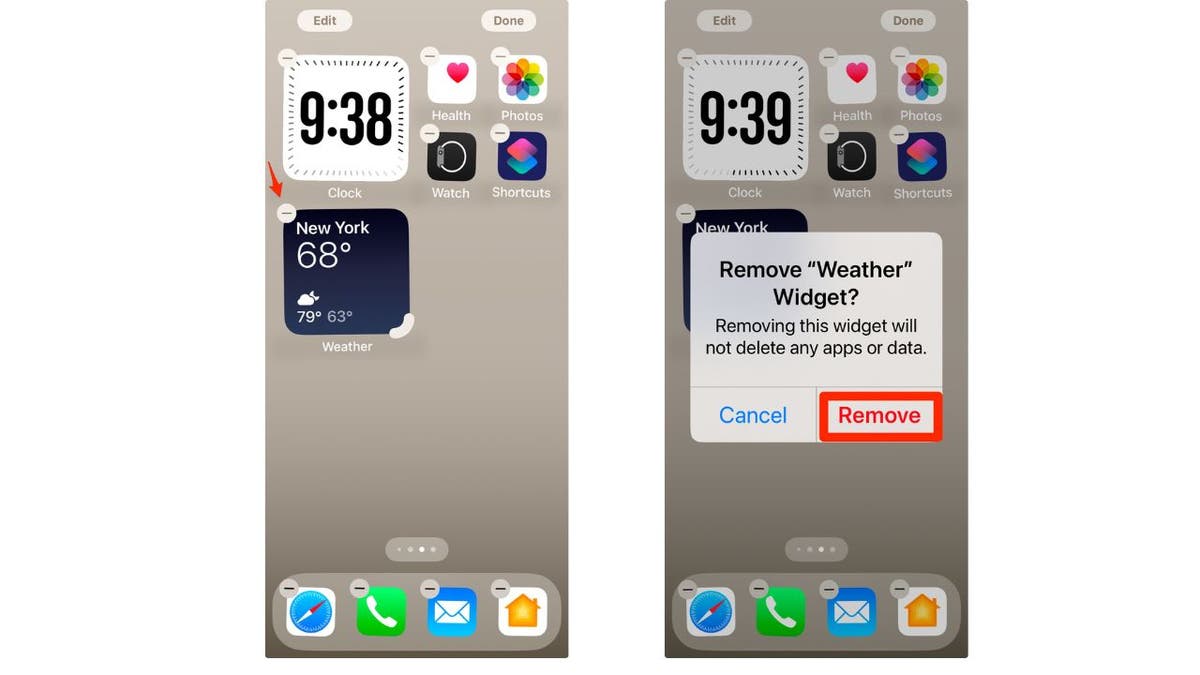
Steps to remove widgets on iPhone’s home screen (Kurt “CyberGuy” Knutsson)
Kurt’s key takeaways
Customizing your iPhone’s home screen with widgets is a great way to personalize your device and improve your productivity. With the ability to add, resize and arrange widgets, you can create a home screen that perfectly suits your needs and preferences. Remember to experiment with different layouts and widget combinations to find what works best for you.
What new widgets do you plan to add to your iPhone home screen to enhance your daily productivity and access to information? Let us know by writing us at Cyberguy.com/Contact.
For more of my tech tips and security alerts, subscribe to my free CyberGuy Report Newsletter by heading to Cyberguy.com/Newsletter.
Ask Kurt a question or let us know what stories you’d like us to cover. Follow Kurt on his social channels:
Answers to the most asked CyberGuy questions:
New from Kurt:
Copyright 2024 CyberGuy.com. All rights reserved.
-

 Business1 week ago
Business1 week agoRef needs glasses? Not anymore. Lasik company offers free procedures for referees
-

 Sports1 week ago
Sports1 week agoAll-Free-Agent Team: Closers and corner outfielders aplenty, harder to fill up the middle
-

 News1 week ago
News1 week agoHerbert Smith Freehills to merge with US-based law firm Kramer Levin
-
/cdn.vox-cdn.com/uploads/chorus_asset/file/25724877/Super_Nintendo_World.png)
/cdn.vox-cdn.com/uploads/chorus_asset/file/25724877/Super_Nintendo_World.png) Technology1 week ago
Technology1 week agoThe next Nintendo Direct is all about Super Nintendo World’s Donkey Kong Country
-
Business5 days ago
Column: OpenAI just scored a huge victory in a copyright case … or did it?
-

 Health5 days ago
Health5 days agoBird flu leaves teen in critical condition after country's first reported case
-

 Business2 days ago
Business2 days agoColumn: Molly White's message for journalists going freelance — be ready for the pitfalls
-

 Technology1 week ago
Technology1 week agoHow a researcher hacked ChatGPT's memory to expose a major security flaw





/https%3A%2F%2Ftf-cmsv2-smithsonianmag-media.s3.amazonaws.com%2Ffiler_public%2F41%2F93%2F4193f623-6009-4c63-a17d-c5f384754adc%2Frasiadult_70158-20.jpg)










